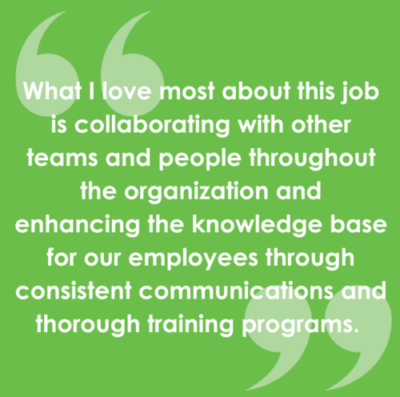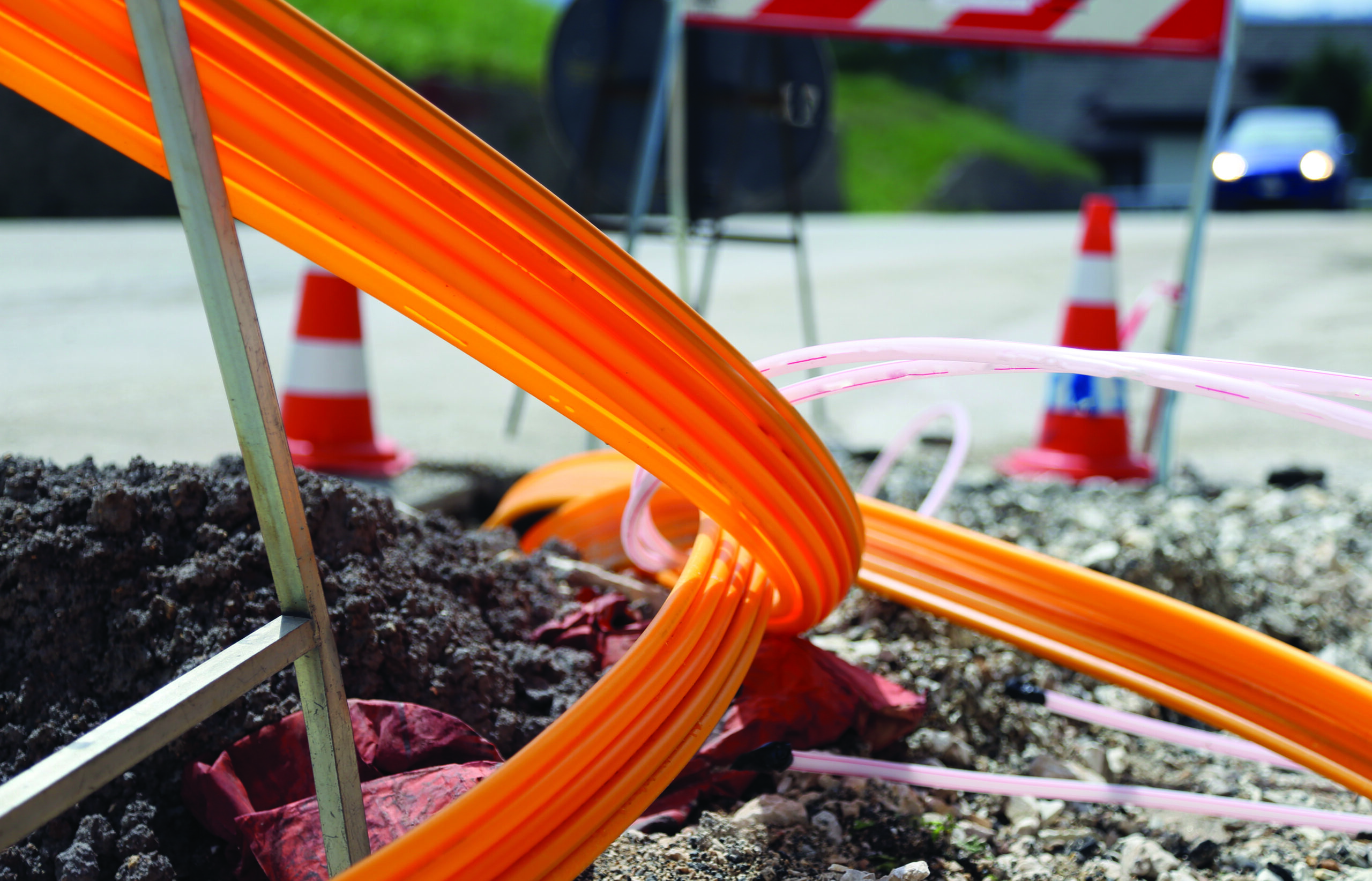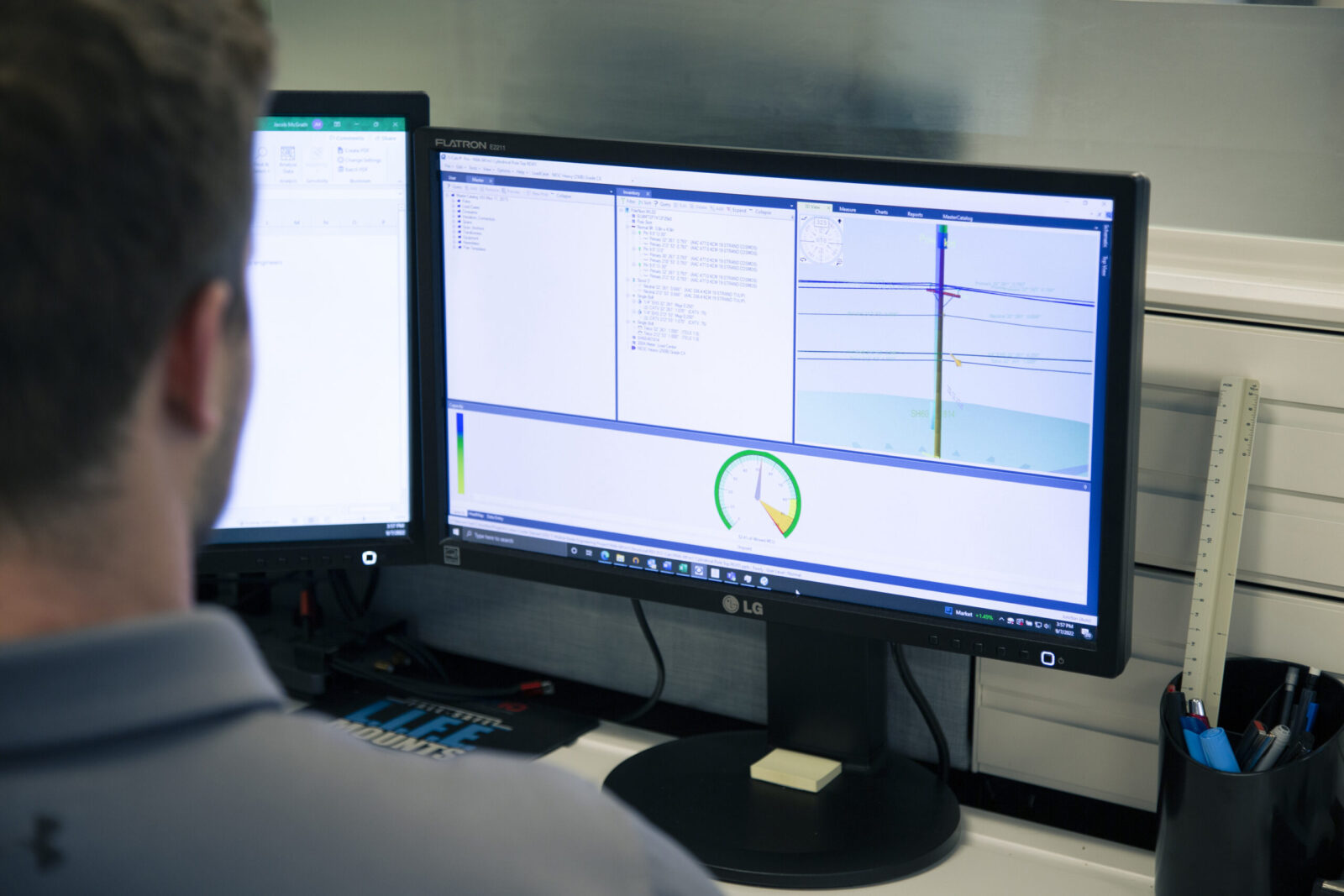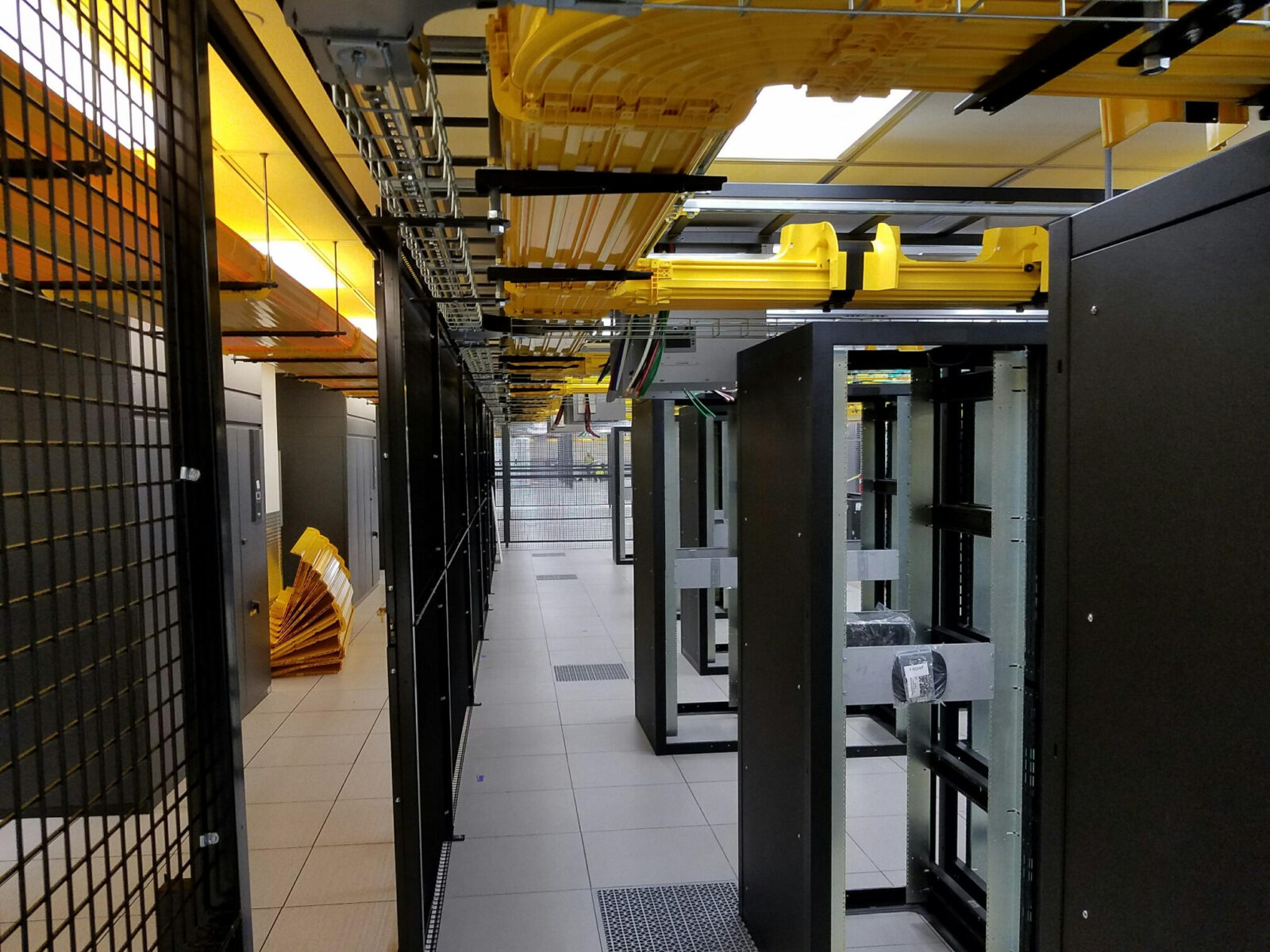While some data center fit out providers focus on a single local area or region, our presence across the US means we can help customers scale their implementations with the same quality and speed on a national level.
The need for nationwide connectivity is growing. Extending connectivity between these distributed data centers is the next challenge. With crews deployed across the country, we can lay and connect fiber both inside and outside the data center.
For example, we’re currently running fiber optic cables hundreds of miles to connect data centers for one of our customers. Our ability to handle both inside plant (ISP) and outside plant (OSP) environments is a differentiator for us.
Modular designs and prefab components are speeding deployments. Working with prefabricated infrastructure components is quickly growing as a tactic for bringing capacity online faster and more economically. Prefabricated modular design cuts construction times, reduces costs, and improves safety, quality, and sustainability since more work occurs in controlled manufacturing settings.4
Pre-packaged power rooms and cooling equipment are examples of these more flexible installations. They arrive onsite, pre-built with all the options you want, ready to be plugged in and turned on. We can connect modules to an existing campus network or finish off internal installation and connectivity.
We build remotely, as well. For example, we install electrical components, patch panels, and fiber boxes in a cabinet located in our warehouse. Then, we wheel it fully loaded into your data center. This process calls for two people onsite, rather than 12 technicians installing separate components. We’re currently expanding our pre-fabrication capabilities to accelerate data center fit out projects.
Supply chain problems are jeopardizing materials availability
Shortages are expected to continue. When Covid hit, shutting down supply lines from overseas manufacturers, the raw materials needed for data center construction became scarce. Even though data center operators and hyperscale cloud providers were always under pressure to get raw materials from US suppliers, they were unable to buy everything required in this country.
It was also a challenge to keep core transportation systems operational with a skeleton workforce and truck driver shortages that immobilized the global supply chain.
Today, this convoluted set of supply chain circumstances continues. In fact, one research study found that over 75 percent of organizations reported disruptions of some type over the last 18 months. 5
Supplier relationships are more important than ever. Over the years, we’ve developed strong manufacturer and partner relationships. This close collaboration gives us more leverage to prioritize distribution where and when materials are needed the most.
Local logistics and warehousing are increasing availability. Data center fit out providers are taking advantage of local warehousing options to store products closer to end users. Our nationwide footprint enables us to negotiate logistics with local manufacturing and distribution partners. This leads to more efficient purchasing and delivery, as well as the room to stage materials in lay down yards for just-in-time delivery to the project site.
Agile installation teams are becoming more critical to meeting construction deadlines
While skilled talent challenges aren’t new to the data center industry, the shift into submarkets exacerbates the impact. There’s a shortage of skilled technicians in a lot of these locations. Our reputation as a quality provider, a good employer, and a union partner enables us to secure skilled labor more easily than other companies, whether you need data center installations in major markets or remote sites.
We also provide a single point of responsibility that simplifies distributed data center construction projects. We can begin by assisting in data center design, drawing on our years of problem-solving experience with other installations. Once the build out is completed, we can provide Day 2 operations support for ongoing network maintenance and management.
Navigating change
These trends represent absolute game changers: it’s like living in an industrial revolution on steroids. Every one of them presents an opportunity for us and for the industry as a whole. It’s a chance to look at what’s ahead, collectively move towards better solutions and to do so with a sustainable approach that rolls with change. We’re here to help you make the most of those changes.
Find out more about our data center deployment services or contact us.
References:
1 Angus Loten, ”AI-Ready Data Centers Are Poised for Fast Growth,” Wall Street Journal, August, 2023. https://www.wsj.com/articles/ai-ready-data-centers-are-poised-for-fast-growth-fadae952
2 Rich Miller, “The Eight Themes That Will Shape the Data Center Industry in 2024,” Data Center Frontier, January, 2024. https://www.datacenterfrontier.com/machine-learning/article/33016915/the-eight-themes-that-will-shape-the-data-center-industry-in-2024
3 Dan Swinhoe, “Amazon Granted Zoning Permission for Data Center & Distribution Site in Round Rock, Texas”, Data Center Dynamics, January, 2024.
https://www.datacenterdynamics.com/en/news/amazon-granted-zoning-permission-for-data-center-distribution-site-in-round-rock-texas
4 Bill Kleyman, “Catching Up With Data Center Construction Constraints,” Data Center Knowledge, March, 2023. https://www.datacenterknowledge.com/buildconstruction/catching-data-center-construction-constraints
5 Miya Knights, “Overcoming Data Center Construction Supply Chain Issues,” Data Center Dynamics, June 15, 2023.
https://www.datacenterdynamics.com/en/analysis/overcoming-data-center-construction-supply-chain-issues/







